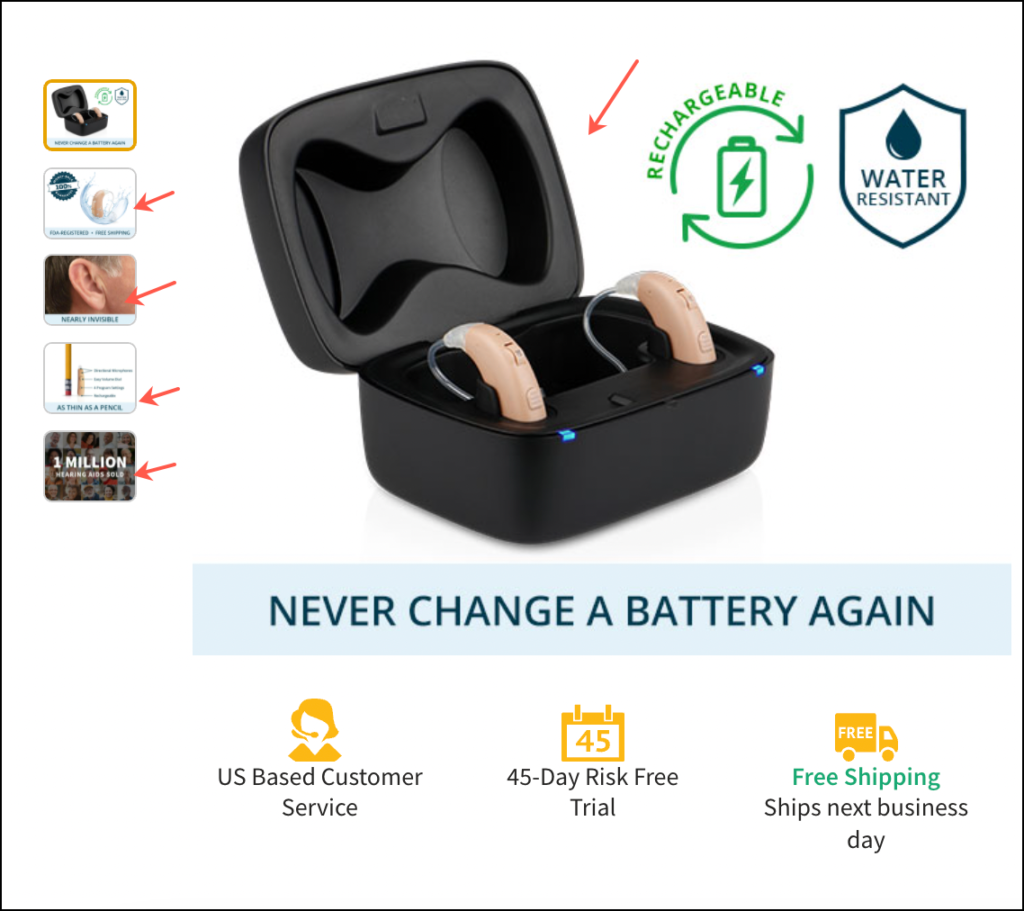Blog
Improving Bestseller Sales
CEOs and marketing teams spend a lot of time thinking about improving bestseller sales.
If you have one main bestseller then do this.
But if you have multiple bestsellers then you have a few more options to boost sales.
I’m reading a book about Andrew Carnegie. Mr. Carnegie used a clever strategy to maximize productivity at his steel plants— he would pit plants against one another.
You might be wondering, “How does what happened at a steel plant relate to improving bestseller sales?“
Let’s see the connection via an eCommerce example.
MDHearingAid.com is a major retailer of hearing aids. Their two top-selling products are:
Both sell in high volume.
Improving Bestseller Sales Using Competing Marketing Teams
To boost sales I’d break my marketing team into 2 groups and assign each one of those two best sellers. I would then have them compete. The goal is to see which team is able to generate more first-time buyers. Here are the ways in which the teams will be able to compete:
1: Each team can rewrite their product description as long as the look/tone of the page remains consistent with the rest of the site.
2: Each team will get their own ad budget so they can drive traffic to their own page (Facebook, banner, affiliate, influencer, AdWords, AdSense, it doesn’t matter.) They can choose to drive paid traffic directly to their product page or they can drive paid traffic to a landing page where the visitor will be oriented and then take the visitor to the product page to complete the sale.
3: Should they choose, the team can create new video content.
4: The team can update the product images and thumbnails on their product page:

The team could replace the existing images on the product page with new Infographics and/or Picture Stories.
5: Teams can contact past purchasers for ideas to improve the product descriptions and generate new reviews, video testimonials, or word-of-mouth marketing.
6: Teams can set up special marketing campaigns. For example, the AIR team might want to add custom code on their page so that after 2 minutes on the page visitors get a prompt that says, “sign up for a secret to buying the perfect hearing aid”. On the backend of the signup, we will have an automated email series.
7: Teams can even take over “chat” for their designated pages. When customers click chat they’ll be talking directly to the team. In fact, you could even apply that to the incoming calls associated with each product page.
The bottom line is we’re treating MDHearingAid AIR and MDHearingAid VOLT as their own independent units with profit and loss responsibilities.
This is just a small list of the ways in which these teams can compete to
boost bestseller sales. I’m sure you’ll be able to add to this list for your unique site.The Winner
The next part is measuring and incentivizing success:
A: We would run the challenge over a 60-day period.
B: The winning team would get an $8,200 prize.
C: Success will be measured by new sales.
Why This Strategy Works
Humans love competition. This will shake things up. Marketing teams would enjoy having more voice over their work. It would help build team learnings. It would build teamwork (no more fighting between the AdWords team and customer service). It’s no longer the boss saying, “we can’t do that.” Now the team can see firsthand why some ideas work and others fail.
I posted this on LinkedIn (link) and LeAnn Reyes added a really good comment. Her concern was that something like this could make things ugly. Here’s what she said:
Some people can get very ugly when it comes to being competitive and money — if they haven’t had to be prior. But the way you frame it and suggest can help with it.
Then it makes me wonder, what if 1 team is constantly superior? Winning that bonus all the time? What keeps the others around? It may not feel good for them, if they are still getting results and doing good, you know?
Maybe the teams could switch up.
Then, I wonder… why not just consistently pay a bonus for results? That could ruffle some feathers for people. Or if the tests/bonuses stop.
Also, I’ve been scarred by bigger teams that have huge silo issues. I wonder if this would be fine, or cause division. Maybe the teams could switch up.
These are just some thoughts that popped into my head.
LeAnn has a valid point— you need to ensure the competition remains healthy. The idea is to motivate teams to want to do better, not make them feel dejected.
Revealing It All
Now that we’ve covered the topic of improving bestseller sales it’s time to share how online retailers should be thinking about marketing. If you are directly related to eCommerce this next set of articles is for you. If you aren’t involved with growing sales for an eCommerce brand please share it with someone in your life who is because it will change the trajectory of their growth.
Why Listen to Us?
We’ve spent the last 14 years in our marketing lab, experimenting on online shoppers. We’ve learned a crap ton and are ready to share those learning.
We want more marketers and CEOs to know about it.
Eventually, we’ll make this into a book. If you want to get an unfair advantage over your competitors now is the time to steal our ideas because once they are published the cat will be out of the bag 👜 for all to see.
Each chapter in our forthcoming book will feed into the next. Click the link that best describes where you want to start the story:
Chapter 1: is all about conversation rate optimization (CRO). It talks about the history of CRO, statistics of CRO, and describes how most agencies do CRO. We need to describe how most are doing it before we reveal our process, which happens in Chapter 4.
Chapter 2: For every 1,000 product pitches encountered the shopper buys one item (and we’re being generous). If you want the consumer to choose your product your need to understand their selection criteria– you need to understand their buyer psychology. Marketers who nail this will always outrun their peers.
Chapter 3: Conversion optimization work typically focuses on design and layout changes. We don’t limit ourselves to design and layout. Through extensive experimentation, we realized that the thing that moves the conversion needle 🧭 are the words and ideas being expressed on the page. Therefore, conversion copywriting is where it’s at.
Chapter 4: Marketers make a fatal mistake. They focus on optimizing the whole site. We focus on the tip of the spear. The most important page on your entire site is your product page. To understand why this is, read this post: Product Page Optimization.



